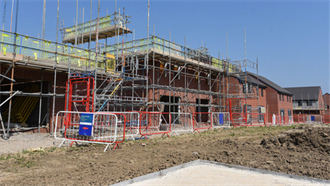Tom Leahy, MSCI Real Assets' head of EMEA research, believes it is too soon to forecast a sustained recovery in sales of commercial buildings after central banks signalled in past weeks that they are almost done with raising interest rates.
Investment volumes fell 59% in Europe in the first half of 2023 from a year earlier, MSCI data shows, following the pace of interest rate increases since the first half of 2022. The sharp drop in transaction activity and a correction in valuation and pricing metrics across many property markets naturally followed.
With recent rate rises by the ECB, financial markets are currently reflecting expectations for borrowing costs to stay high for some time. But if these conditions remain stable, Leahy believes visibility should improve on how to price assets.
That said, the EMEA head of research believes there is one big factor that can determine recovery: ‘It is property owners’ loss aversion that will dictate how quickly transaction markets across Europe recover,’ he said.
‘It is human nature to avoid crystallising losses, with investors preferring to sell winners and to hold on to losers in the hope of better days. This has important consequences for commercial real estate market liquidity, which can vary significantly from one city to another.’
He added: ‘Our analysis allows us to estimate the proportion of properties in global cities that may be worth less than owners paid for them. In Europe, London came out worst, with more than 50% of buildings potentially in the red, followed by the German A cities, where the proportion was 35%.’
MSCI has been applying its capital liquidity scores to show a market’s liquidity is adversely affected the more properties are estimated to be in the red. This has consequences for transactions in terms of the type of assets that sell, since property owners are more willing to dispose of assets where they had made their returns than take a loss on lower-quality buildings.
Said Leahy: ‘The disparity in pricing expectations is also blocking sales activity. MSCI’s Price Expectations Gap models the difference in what buyers are willing to pay for a building and the price at which sellers are willing to trade. In the case of London offices, we estimate the gap is in the region of -20%, whereas in Germany’s A Cities it is more pronounced, at around -28%.’
‘The negative impact on property market liquidity will endure if owners cling to prior valuations or are unable or unwilling to take a loss on assets after the market has shifted so much in the last 18 months. In this instance, distress and forced sales may help in the price discovery process, setting reserve prices and allowing buyers and sellers to move closer together.’


































